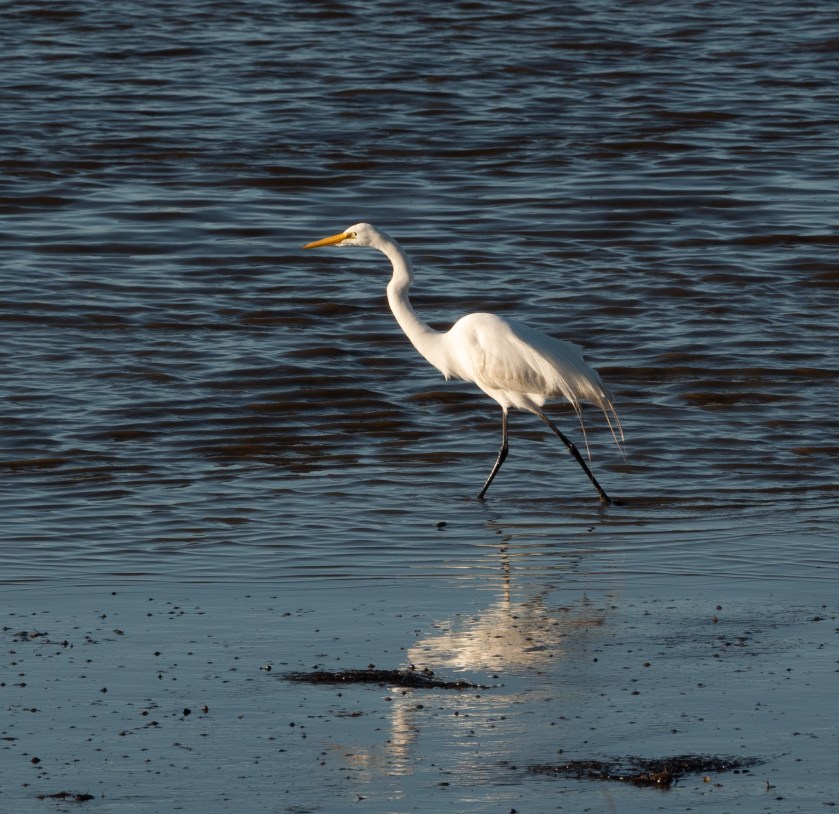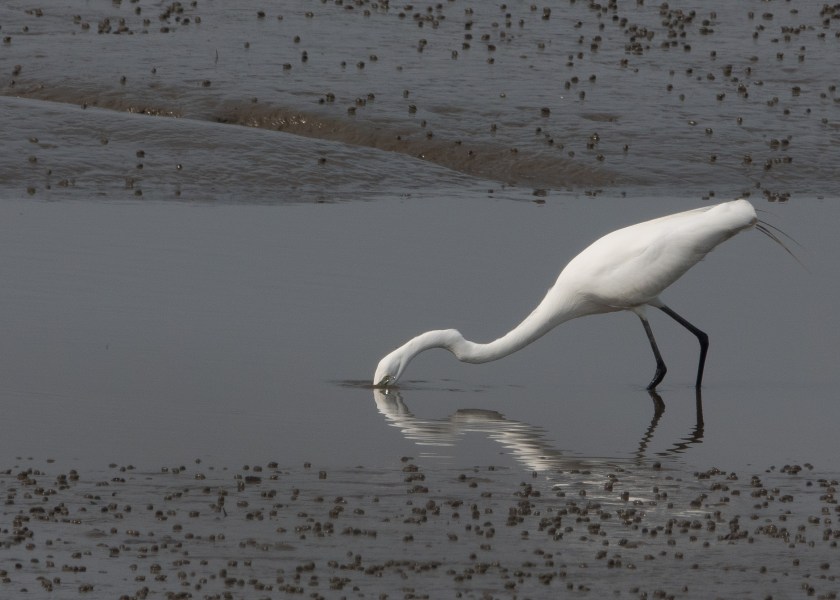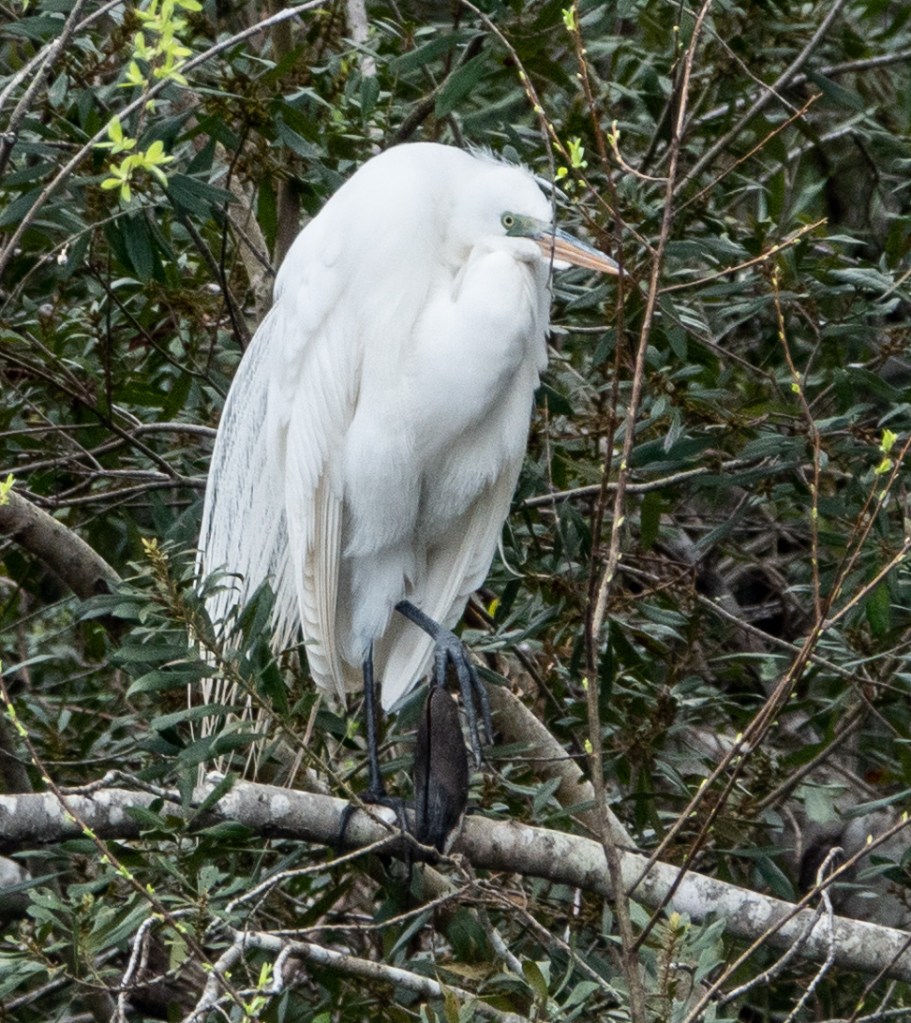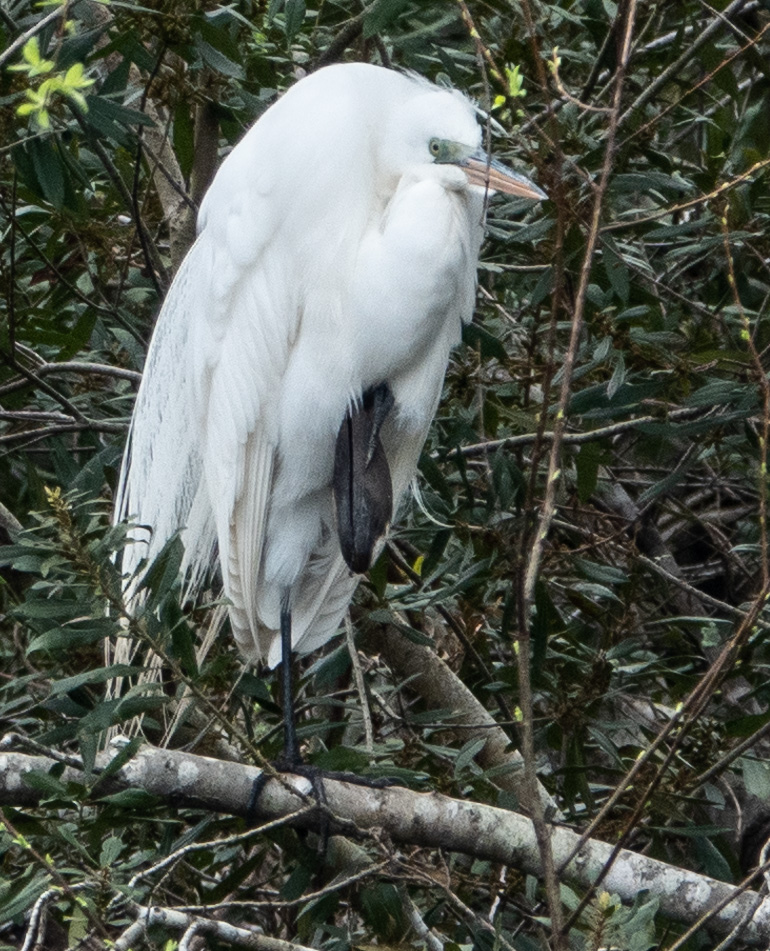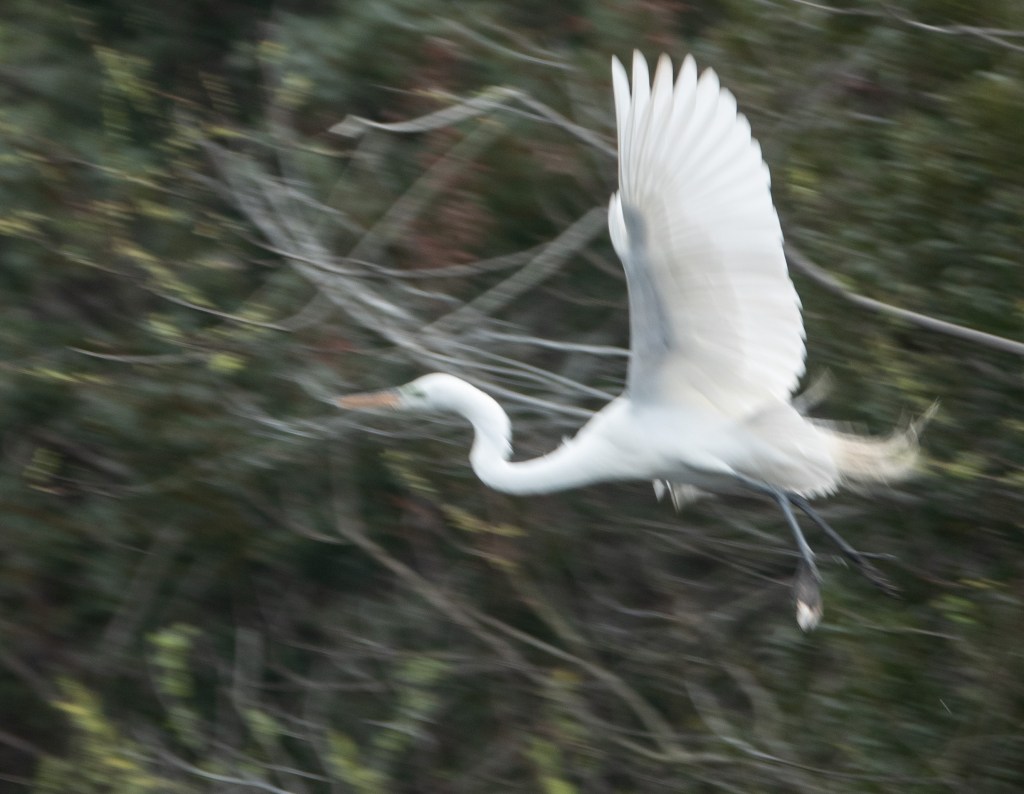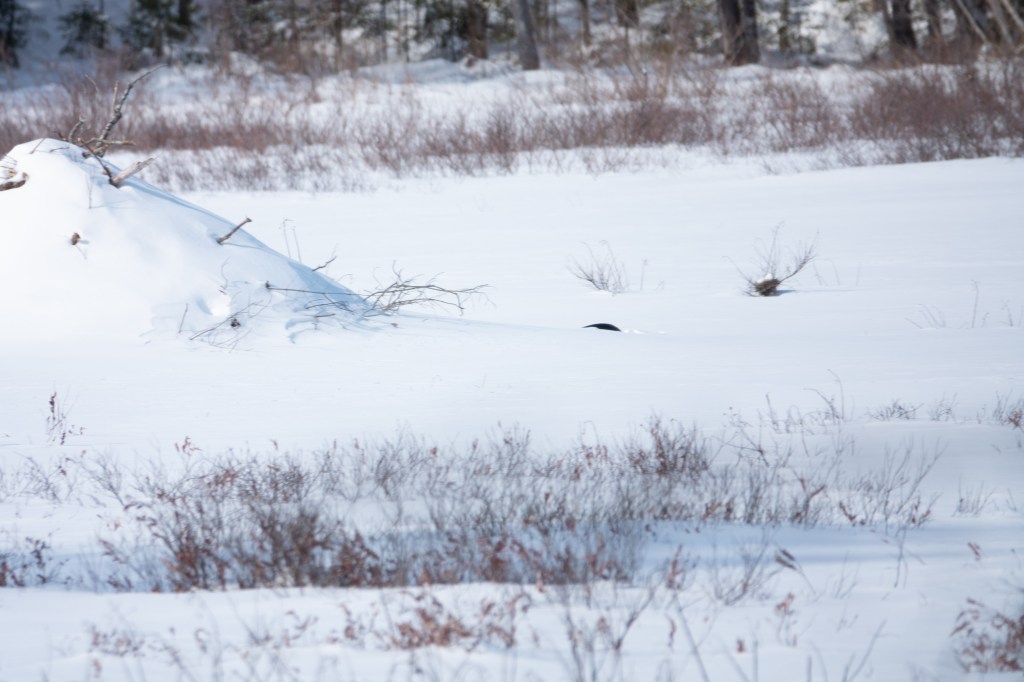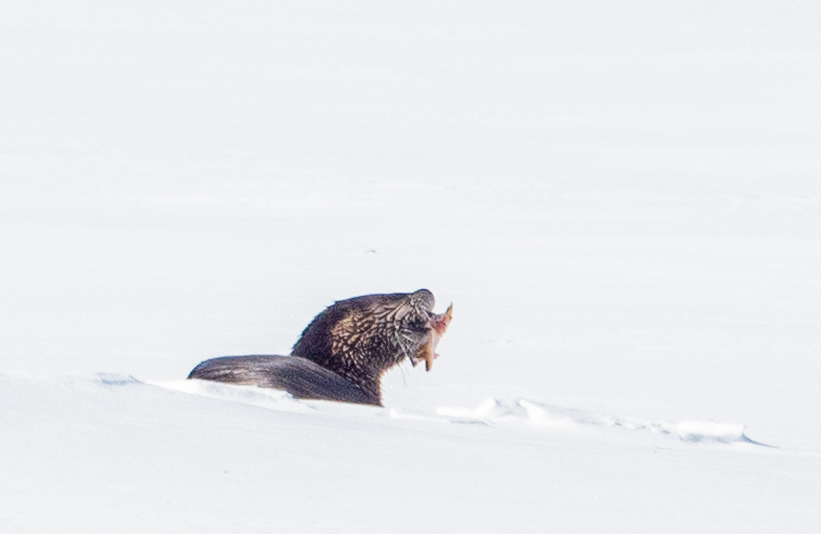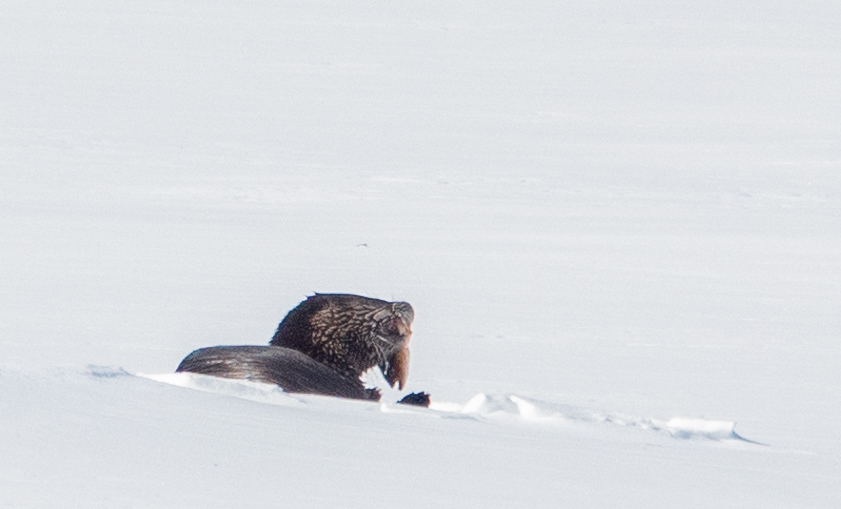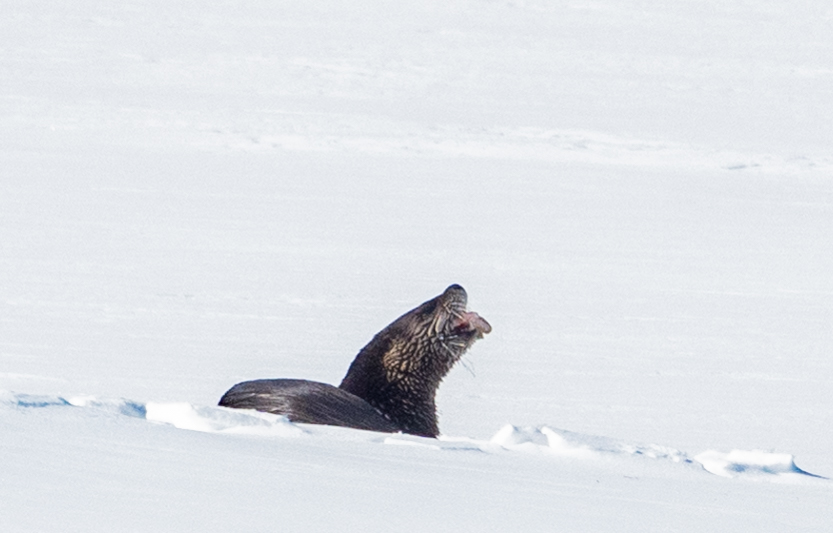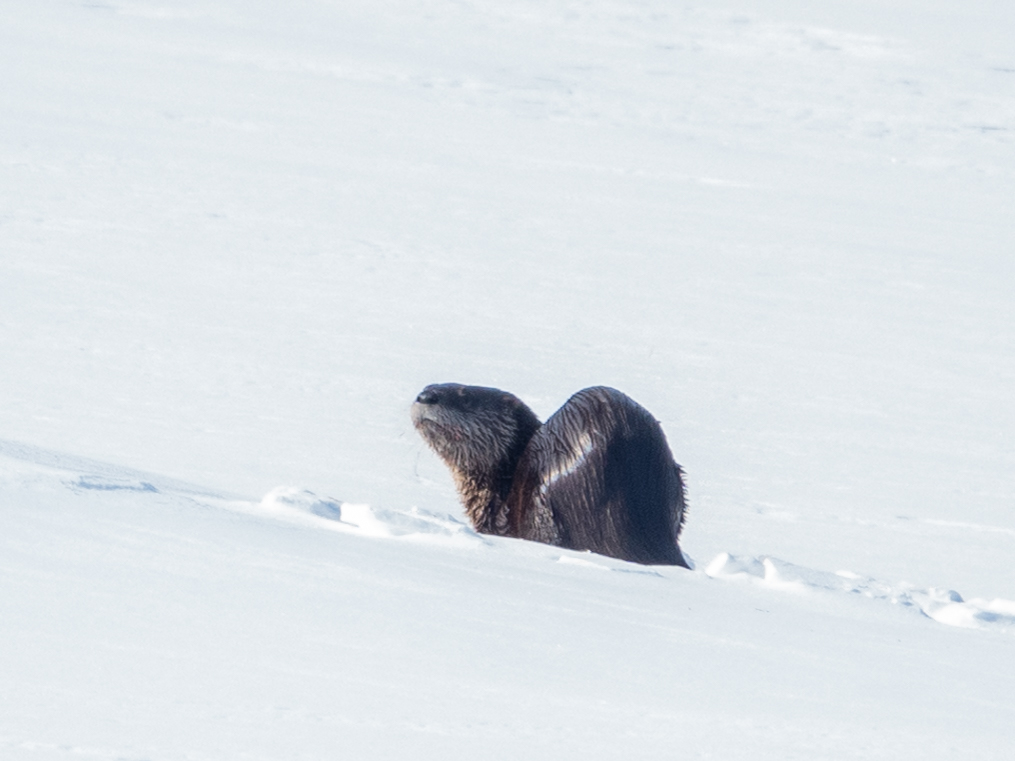We all know that at one point dinosaurs ruled the world, and then, somehow, us mammals took over. But modern mammal vs reptile encounters can go in either direction. You may well think I am obsessed by otters, but I was truly not thinking about them down in South Carolina. Instead, I was keeping my eyes out for alligators:
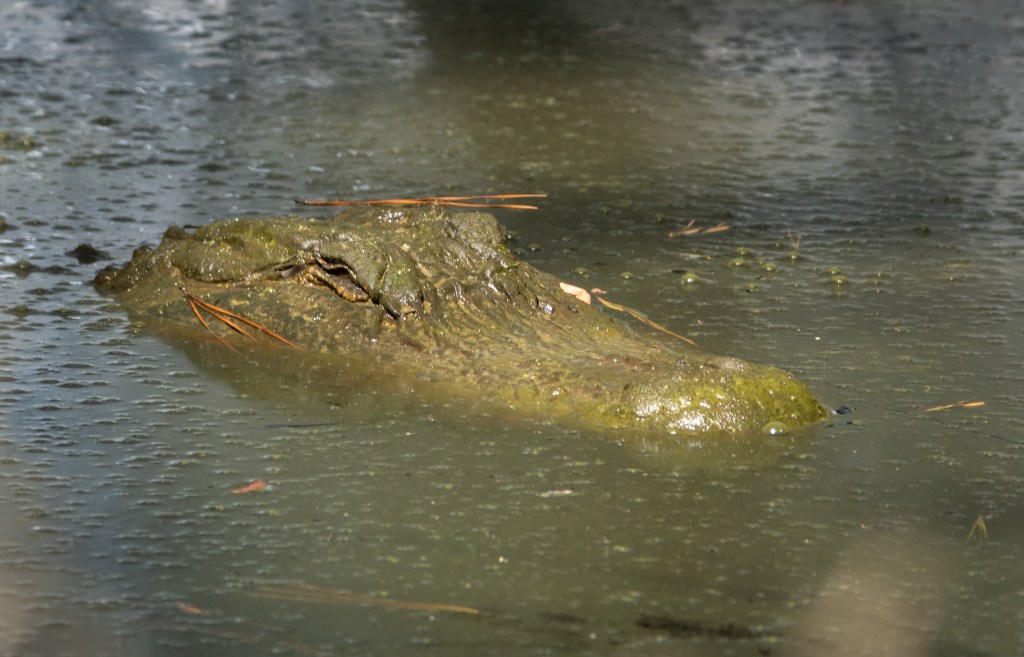
There was a small one in my friend’s pond, and I had just got it into focus when what should swim round the corner into the shot but… an otter:

After a brief moment’s reflection, it wisely dived, and that was that.

I started to Google “Do alligators eat otters?”, and what I found astonished me. Story after story showing the reverse: an otter killing and eating a sizable alligator.
Down in the Pantanal, the BBC filmed a family of giant otters winning a fight with a caiman.
Of course, alligators can and do eat otters, but it isn’t considered newsworthy so it barely shows up in a Google search. But “otter eats alligator” turns up dozens of stories!
And then I returned home to Maine, and there was my very own warm-blooded otter, with a large cold-blooded fish, and not an alligator in sight.


So it seems that the mammals still win…
PS The ice is melting, and as soon as some open water appeared so did the waterfowl. There is still plenty of ice, as you can see, but I spotted Canada Geese, Green-winged Teal, Hooded Mergansers, Common Mergansers, Common Goldeneyes, Wood Ducks, and American Black Ducks.


